Evgeny Bobrov
M.V. Lomonosov Moscow State University, Huawei Technologies, Russian Research Institute, Moscow Research Center
Mapper Side Geometric Shaping for QAM Constellations in 5G MIMO Wireless Channel with Realistic LDPC Codes
Mar 05, 2023Abstract:In wireless communication systems, there are many stages for signal transmission. Among them, mapping and demapping convert a sequence of bits into a sequence of complex numbers and vice versa. This operation is performed by a system of constellations~ -- by a set of labeled points on the complex plane. Usually, the geometry of the constellation is fixed, and constellation points are uniformly spaced, e.g., the same quadrature amplitude modulation (QAM) is used in a wide range of signal-to-noise ratio (SNR). By eliminating the uniformity of constellations, it is possible to achieve greater values of capacity. Due to the current standard restrictions, it is difficult to change the constellation both on the mapper or demapper side. In this case, one can optimize the constellation only on the mapper or the demapper side using original methodology. By the numerical calculating of capacity, we show that the optimal geometric constellation depends on SNR. Optimization is carried out by maximizing mutual information (MI). The MI function describes the amount of information being transmitted through the channel with the optimal encoding. To prove the effectiveness of this approach we provide numerical experiments in the modern physical level Sionna simulator using the realistic LDPC codes and the MIMO 5G OFDM channels.
Machine Learning Methods for Spectral Efficiency Prediction in Massive MIMO Systems
Dec 29, 2021

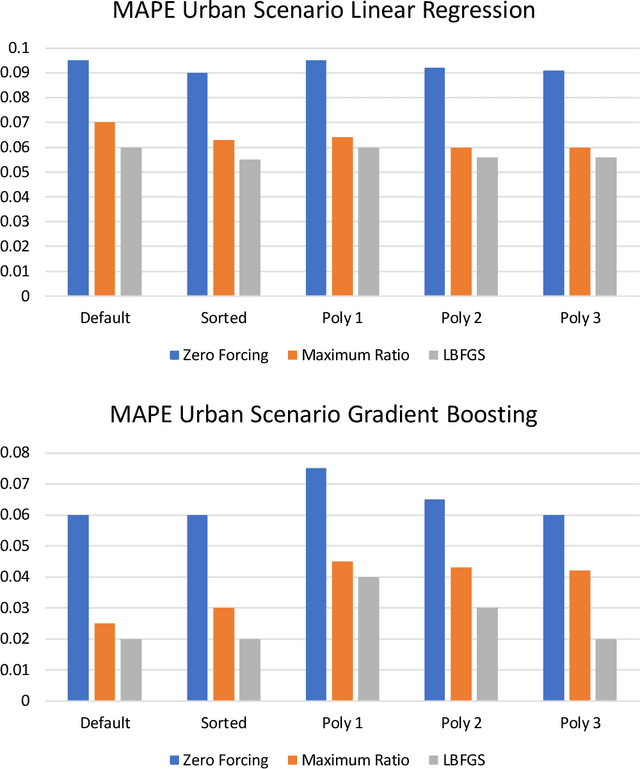
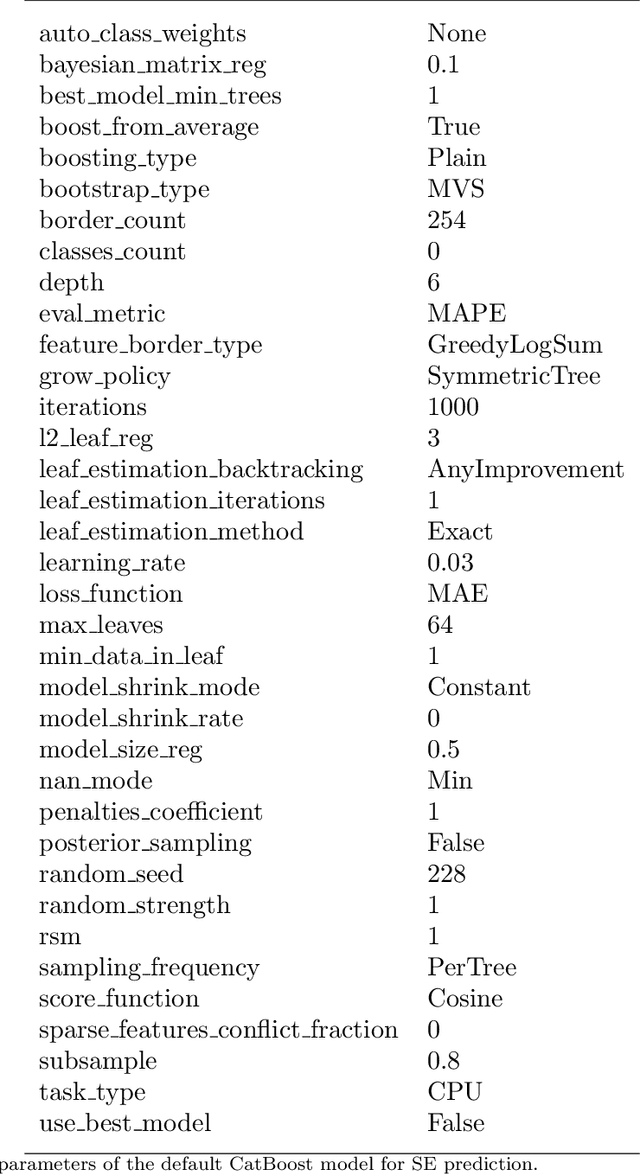
Abstract:Channel decoding, channel detection, channel assessment, and resource management for wireless multiple-input multiple-output (MIMO) systems are all examples of problems where machine learning (ML) can be successfully applied. In this paper, we study several ML approaches to solve the problem of estimating the spectral efficiency (SE) value for a certain precoding scheme, preferably in the shortest possible time. The best results in terms of mean average percentage error (MAPE) are obtained with gradient boosting over sorted features, while linear models demonstrate worse prediction quality. Neural networks perform similarly to gradient boosting, but they are more resource- and time-consuming because of hyperparameter tuning and frequent retraining. We investigate the practical applicability of the proposed algorithms in a wide range of scenarios generated by the Quadriga simulator. In almost all scenarios, the MAPE achieved using gradient boosting and neural networks is less than 10\%.
Variational Autoencoders for Studying the Manifold of Precoding Matrices with High Spectral Efficiency
Dec 01, 2021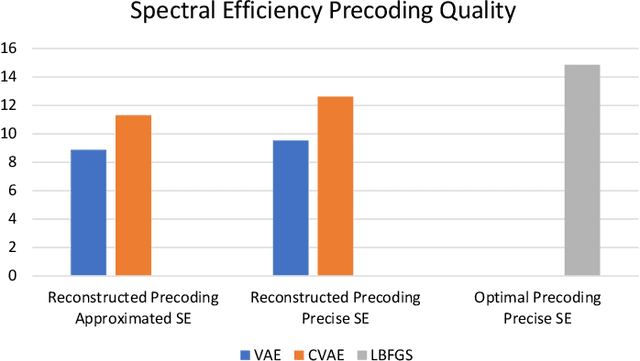
Abstract:In multiple-input multiple-output (MIMO) wireless communications systems, neural networks have been employed for channel decoding, detection, channel estimation, and resource management. In this paper, we look at how to use a variational autoencoder to find a precoding matrix with a high Spectral Efficiency (SE). To collect optimal precoding matrices, an optimization approach is used. Our objective is to create a less time-consuming algorithm with minimum quality degradation. To build precoding matrices, we employed two forms of variational autoencoders: conventional variational autoencoders (VAE) and conditional variational autoencoders (CVAE). Both methods may be used to study a wide range of optimal precoding matrices. To the best of our knowledge, the development of precoding matrices for the spectral efficiency objective function (SE) utilising VAE and CVAE methods is being published for the first time.
Massive MIMO Adaptive Modulation and Coding Using Online Deep Learning
May 31, 2021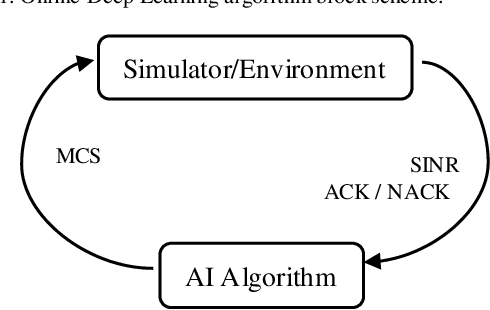
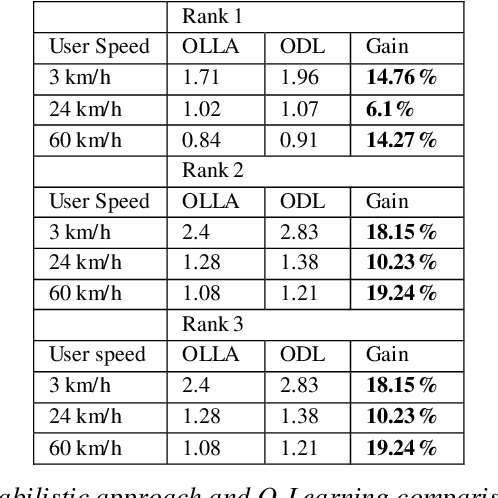


Abstract:The paper describes an online deep learning algorithm for the adaptive modulation and coding in 5G Massive MIMO. The algorithm is based on a fully connected neural network, which is initially trained on the output of the traditional algorithm and then is incrementally retrained by the service feedback of its output. We show the advantage of our solution over the state-of-the-art Q-Learning approach. We provide system-level simulation results to support this conclusion in various scenarios with different channel characteristics and different user speeds. Compared with traditional OLLA our algorithm shows 10% to 20% improvement of user throughput in full buffer case.
 Add to Chrome
Add to Chrome Add to Firefox
Add to Firefox Add to Edge
Add to Edge